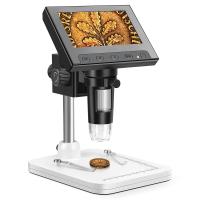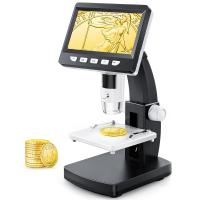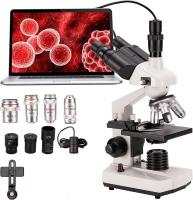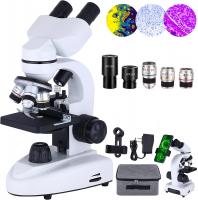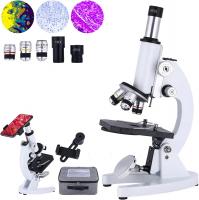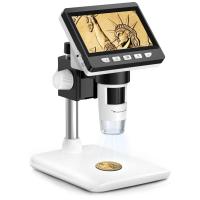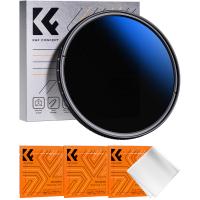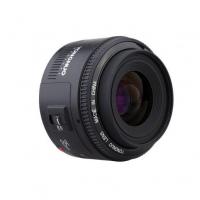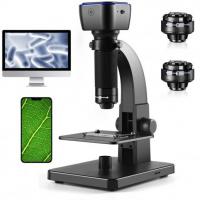What Is The Smallest Lens On A Microscope?
When delving into the world of microscopy, one encounters lenses of varying magnifications and purposes. However, when we talk about the smallest lens on a microscope, we are typically referring to the objective lens with the lowest magnification. This small, yet critical component of the optical microscope plays a crucial role in initial specimen observation, setting the stage for higher magnifications and more detailed studies.
In this article, we will explore the nature of the smallest lens on a microscope, its functions, applications, and the pivotal role it plays in both educational and professional scientific environments. Additionally, we will examine the technological advancements that have evolved these lenses and how they cater to the needs of different fields of study.
Understanding the Smallest Lens

The smallest lens on a microscope is generally the objective lens with the lowest magnification, often termed as the "scanning objective" or "low power objective." Typically, this lens offers a 4x magnification. In comparison to higher magnification lenses like the 10x, 40x, or 100x objectives, the 4x lens provides a broader field of view and less detail, making it ideal for getting a general overview of the specimen.
Functions of the Smallest Lens

1. Initial Scanning of Specimens:
- The primary function of the 4x objective lens is to allow users to scan and locate areas of interest on a slide. Given its wide field of view, it enables easy navigation across the specimen and helps in centering the subject before switching to higher magnifications.
2. Facilitating Coarse Focusing:
- When first placing a slide under the microscope, utilizing the 4x objective lens facilitates the coarse focusing process. At this stage, adjustments to the focus are less sensitive, which is beneficial for newcomers or when dealing with larger specimens.
3. Providing Context:
- In studies requiring more detailed analysis, the low power objective lens helps in understanding the overall context. For instance, in biological studies such as histology, this lens allows the observer to see the tissue architecture before zooming in on particular cells or structures.
Applications and Importance

The smallest lens finds extensive applications across various fields. Below is a breakdown of some significant areas where it plays a vital role:
1. Educational Laboratories:
- In educational settings, the 4x objective lens is invaluable. It introduces students to microscopy without overwhelming them with high magnifications. Beginner microbiologists and students can thus easily learn specimen preparation, slide handling, and initial focusing techniques.
2. Pathology:
- Pathologists use the 4x objective lens to get an initial look at body tissue samples. This preliminary scan helps them identify regions of interest or abnormalities which require detailed examination under higher magnifications.
3. Botany:
- In botanical studies, the low magnification lens allows the observation of entire plant structures, such as leaves or small plants, in one glance. This is particularly useful in studying plant morphology and identifying larger-scale features and patterns.
4. Entomology:
- For entomologists studying insects, the 4x objective lens provides an essential first step in examining insect morphology, placing specific structures within a broader anatomical context.
Technological Advancements

The development and improvement of low magnification lenses have significantly expanded their functionalities. Innovations in materials, lens coatings, and digital integration have made these lenses more versatile and effective.
Improved Optical Quality
Modern objective lenses benefit from advanced manufacturing techniques that produce lenses with superior clarity and minimal optical aberrations. This enhancement ensures that even at low magnifications, the images are sharp and accurate.
Digital Microscopy
The advent of digital microscopy integrates traditional optical lenses with digital cameras and software. This allows for capturing high-resolution images and videos of specimens even with the 4x objective lens. Furthermore, these digital tools often come with features like image stitching, which can create detailed, wide-field images of specimens by combining numerous smaller images.
Versatile Applications
Innovation has also led to the development of versatile lenses that can be used with different types of microscopes, including stereo microscopes. This versatility means that a single lens design might be used for a range of applications, enhancing its utility in various scientific fields.
Practical Insights for Microscope Users
For those new to microscopy or even seasoned users, understanding the capabilities and proper use of the 4x objective lens can significantly enhance their work. Here are some practical insights:
1. Starting with the Right Objective:
- Always begin with the 4x objective lens when examining a new slide. This approach not only helps in locating the area of interest but also prevents potential damage to the higher magnification lenses and specimens that could occur due to misalignment.
2. Proper Maintenance:
- Regular cleaning of the lenses, especially the smaller objective lenses, is crucial. Dust or smudges can significantly affect the clarity at low magnifications. Use proper optical cleaning solutions and tools.
3. Consistent Calibration:
- Ensure that the microscope is well-calibrated. This includes aligning the optical path correctly and ensuring that the mechanical stage is functioning smoothly, which is particularly important for scanning large specimens.
4. Leveraging Digital Tools:
- Utilize digital enhancements wherever possible, including digital cameras and image processing software. These tools can help in documenting findings, sharing observations with peers, and providing detailed analysis that goes beyond what the naked eye can see through the eyepiece.
The smallest lens on a microscope, with its 4x magnification, is a foundational tool in microscopy. While it provides the least detail compared to higher magnification lenses, its capacity to offer a broad overview, ease of use for beginners, and essential role in initial specimen analysis cannot be overlooked. From educational settings to advanced scientific research, this lens serves as the cornerstone for microscopic exploration, setting the stage for more detailed investigations.
Technological advancements continue to enhance its function, integrating modern optical and digital innovations that expand its capabilities and applications. By understanding and utilizing the 4x objective lens effectively, users can significantly improve their microscopy experience and outcomes, making it an indispensable tool in the world of scientific inquiry and discovery.


